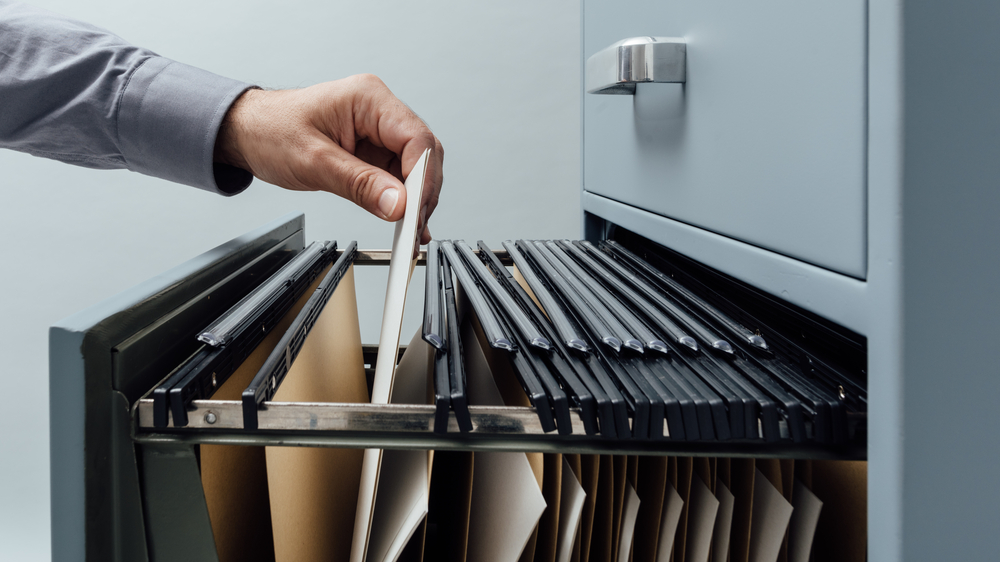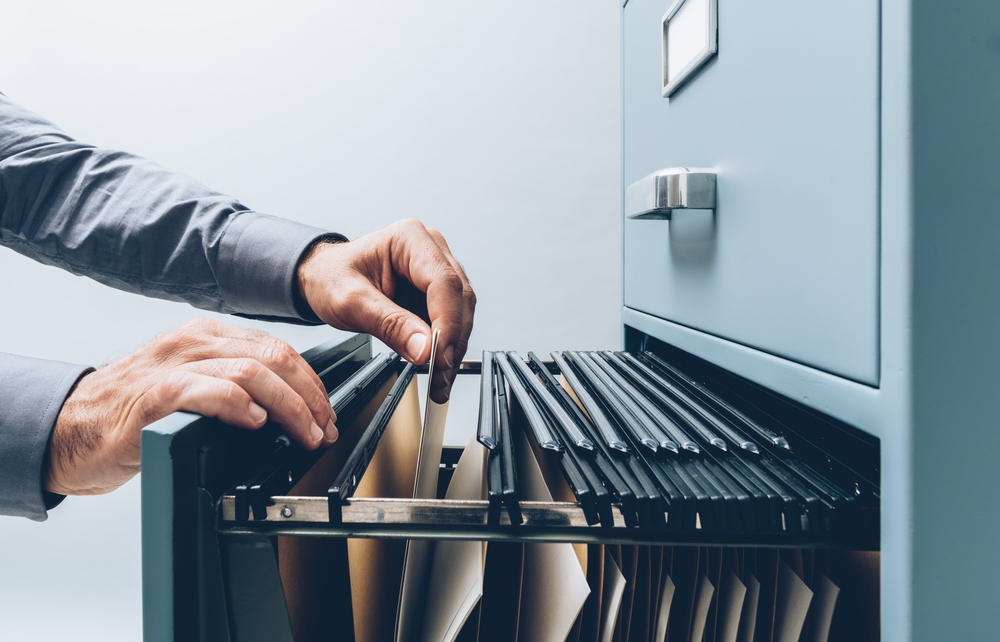Paper files are… stressful. We live in a world where we always have access to technology, so how do you store and organize paper files so you have access to them when you need them?
3 Steps for Storing Paper Files
All those personal papers pile up one by one over time. Maybe you just shove them in a drawer or hide them in a box so you don’t have to look at them. But we all know that isn’t the solution! Here are some tips to help you get them out of hiding and conquer the task of organizing your files. It’s not as difficult as it may seem.
Step 1: Categorize Your Files
Get three small boxes or bins and label one “Require Action”, label another “Reference Only” and label the third as “Don’t Need”.
- Require Action – This category covers your files that require some sort of action before you can consider them done or completed. This would include unpaid invoices, legal notices and time-sensitive offers that you are interested in exploring further.
- Reference Only – This category covers the files that you need to keep for future reference, but don’t need to have immediately on hand. This includes valid product warranties, user manuals and old tax documents.
- Don’t Need – This one is basically self-explanatory. This includes all files you don’t need any more and can simply throw away. These include pay stubs from the last decade and car maintenance records for vehicles you no longer own. Because these files may contain sensitive information, you should dispose of them safely by shredding or burning them.
Helpful Tip: IRS standards on record keeping can be seen by clicking here.

Step 2: Prepare Your Files for Storage
Before placing files in storage, it is good to know the best way to store them first. You don’t just want to toss them into a box and forget about them. Follow these tips:
- Make Digital Copies. Make digital backups of all your important documents. That means scanning them and saving them on your computer. It’s a good idea to make a backup of your backup as well, so also save them onto an external hard drive or CD/DVD.
- Select Good Boxes. Be sure to use sturdy cardboard boxes with lids for easy access to files. You can purchase actual file boxes at your local office store or online. These are great because they have handles for easy moving and a place to write on the box what files and years are inside. You can also purchase boxes in our retail store inside our rental offices. We have several sizes you can choose from and they are specially treated to withstand long periods of time in storage.
- Consider a Locking Cabinet. For extremely sensitive documents, you may want to store them inside a tall 4-drawer filing cabinet or a lateral filing cabinet that locks instead of simply using boxes.
- Label Boxes Clearly. Don’t just fill the boxes and forget about them. You should label each box clearly with a Sharpie®. Make sure to write the years covered and the file types on the outside of the boxes so you can find files quickly when you need to. For example: “Tax Returns 2009-2011” or “Appliance Manuals Various Years”
Read more tips on how to organize files and inventory storage for small businesses here.
Step 3: Move Your Files to Storage
Now that you have everything backed up, boxed up, and labeled clearly, you can get those files out of your sight and put them in a self storage unit for safekeeping until you need to access them.
- Use a Self Storage Unit. Get these old files out of your house! Rent a self storage unit and keep them safe but out of sight. Place the files you are most likely to need at the front of the unit – like the product manuals and warranty info. Things like old tax returns can go in the back of the storage unit because you most likely will not need to access them often if it all.Storing your sensitive files in a temperature control storage unit to ensure they won’t be damaged by moisture or mold. Paper especially, over time, can be very susceptible to extreme heat and humidity.So, for example, if you are using storage for your business and you will need the old files for a possible future audit or to reference client information, you need to take extra care to keep them protected. If we have a summer where it’s consistently over 90 degrees with high humidity, you run the risk of your paper files becoming damaged when stored in a standard drive up storage unit. Don’t take the chance, and use temperature control storage to be safe.
Helpful Tip:
Don’t use newspaper as filler inside the boxes. The ink can rub off and make your files hard to read or even ruin them. If you feel that you must fill the empty part of the boxes with something, use plain packing paper for those spots. You can purchase plain packing paper in our retail store inside our rental offices.
Now that you have the tips and information you need to organize your files and move them into a self storage unit for safekeeping, take advantage of National Organize Your Files Week, which is April 17 – April 23 this year, and whip your files into shape! If you are ready to get started, you can reserve or rent your storage unit online now, or contact us for more information.
Originally posted 4/14/2016; Updated 7/22/2021

